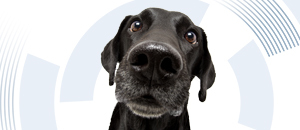
Unlock value by liberating your people: Agile lessons from COVID-19
The coronavirus pandemic has forced organisations to become more agile. People and processes have adapted at unprecedented speed. And with remote working and trust-based relationships becoming the norm, many organisations have adopted one of the five dimensions of organisational agility – they’ve liberated their people.
For example, one global bank has used the transition to remote working as a spur to create flatter, more collegiate structures. This has included extending previously closed-door meetings to more people, sharing previously privileged information via internal digital channels and encouraging feedback on organisational design from all people. This has led to more people buying into change, which is happening faster because of the reduced hierarchy.
This shift to more agile ways of working will continue to bear fruit beyond the pandemic as further change and innovation can happen more easily.
But how should leaders go about building such value-adding trust and liberation? In our experience, organisations should:
-
revisit their purpose to ensure employees can connect with it
-
adopt a mindset that embraces uncertainty
-
empower individuals to safeguard their own health and wellbeing, and managers to look after their team in a stressful environment.
Revisit your purpose to ensure employees can connect with it
We know purpose drives the top performing organisations. A purpose-led business understands its role isn’t just to generate value for customers and shareholders, but to generate value for wider industry, society and the planet as well. Organising around a purpose that aims to deliver such wide value inherently drives value back to your business – not least because it liberates your people.
When employees connect to a purpose, they can make decisions themselves as they’ve got a guiding star to follow. That accelerates progress by minimising signoffs, and helps people better appreciate their contributions. And it empowers self-governing teams as everyone knows the direction of travel, driving efficiencies.
The key to fostering and embedding this connection is to create an authentic purpose that links to the work people do daily. And that’s why it’s vital to regularly revisit it. For example, we worked with Ørsted, Denmark’s largest energy provider, on their journey to producing all their energy from renewable resources. This required a shift in purpose, so we helped create and foster a connection to the new purpose by organising their people into an agile operating model. The new teams could rapidly innovate as they could clearly see how their work contributed to achieving the new purpose.
Adopt a mindset that embraces uncertainty
Organisations that succeed within uncertain environments continuously monitor and respond to customer needs and the competitive landscape, empowering their teams to evolve products and services iteratively and experimentally in response.
We recently partnered with a global retailer to improve agility across their technology and business operations, helping speed up delivery by empowering teams. To achieve this, we provided agile coaching support that helped them embrace uncertainty – the focus was on testing ideas that could deliver customer value early and measuring success against outcomes rather than task completion. While traditional delivery models look for evidence an idea should work before investing significant time and resources into delivering it at scale, our approach empowered teams to test uncertain ideas in the real world, shutting down what didn’t work before committing additional resources.
Empower individuals and managers to safeguard health and wellbeing
Managers and team leaders must become ‘servant leaders’. They need to encourage teamwork, eliminate blockers to success and bring on board those that feel disconnected. Before the pandemic, face-to-face interactions made this support much easier.
To ensure individuals stay healthy and motivated in a world of remote working, , managers must create an environment where all team members can show and employ their best selves without fear of negative consequences. They can do this by recognising people’s individual differences and needs, taking the time to understand as much as possible about what makes them tick, what works for them and where their biggest challenges are. This includes looking out for digital presenteeism and working additional hours while at home.
Think about wellbeing on a spectrum, from good to poor health, and make sure you have the resources to respond, such as a wellbeing chatbot that makes it easy to find useful information. And make wellbeing social by sharing memes, playing games as a team or organising virtual group meets. This can maintain morale and a sense of belonging, as well as foster the openness, energy and environment for teams to share, challenge and improve ideas.

Can old dogs learn ingenious new tricks?
COVID-19 has shown leaders they can liberate their people
Remote working has forced a shift away from strict hierarchies towards trusting relationships. This is supporting the longer-term trend towards organisational agility that our research shows unlocks top-tier financial performance. As the world begins to recover from the pandemic, leaders must focus on purpose, embrace uncertainty and safeguard health and wellbeing to maintain the benefits of a liberated workforce.
Explore more







